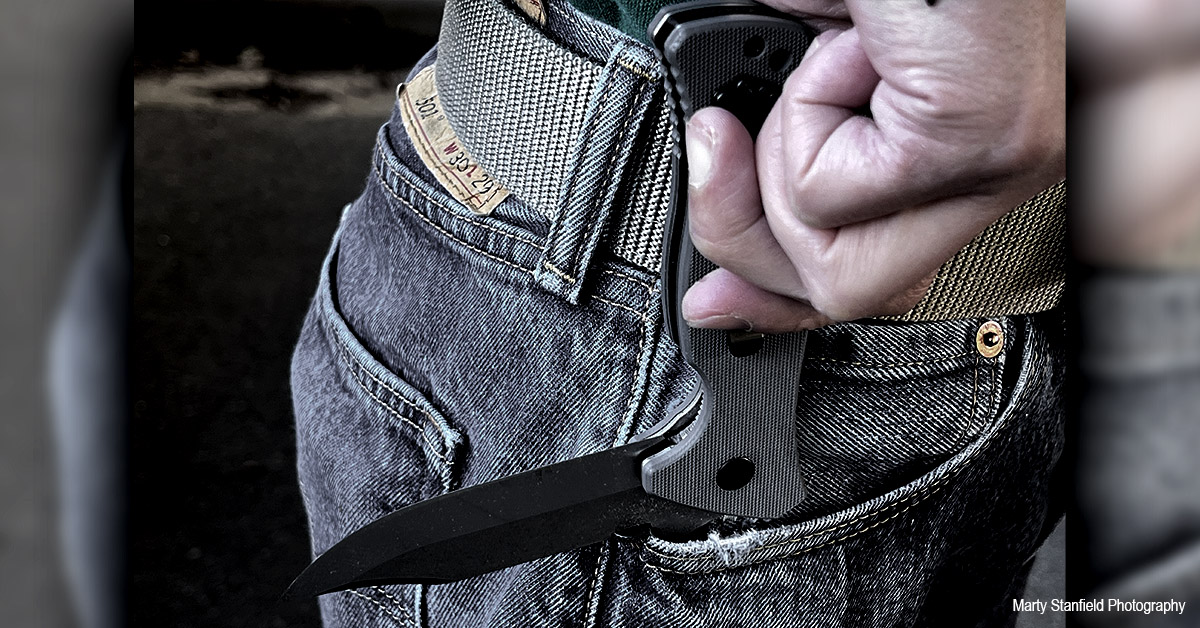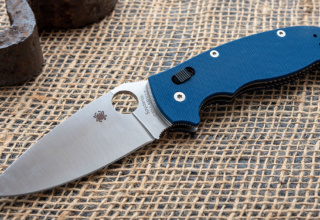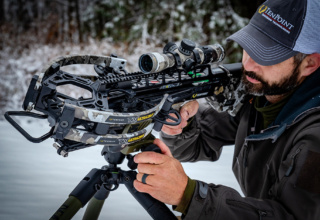Our resident expert on all things that cut and slice takes a deep dive into the tactical knife waters
by Dexter Ewing
Tactical knife. Tactical knives. Tactical fixed-blade. Tactical folder.
For over 20 years, the word “tactical” has been one of the most used words in the knife industry. Its origins come from the late 1990s, coinciding with the rise of the tactical knife trend at that time. If you are into knives today, you know that the tactical knife trend is still as hot as ever and it is an extremely competitive segment of the knife market — saturated with manufacturers and many different models across all price ranges. Everywhere you read about knives, there is that word — “tactical.” It is the knife industry’s most overused word.
How did it get to be this way?
Before we dive into this, let’s first set the stage and take a look at the rise of tactical knives.
Tactical knives were originally developed for military and law enforcement and were epitomized as tough, resilient, and brawny knives. When they hit the market in the late ’90s, the knives were tools, first and foremost — purpose-built designs that were not afraid to be used hard. By today’s standards, the early tactical knives didn’t look as refined as they are today, but that’s the natural progression of things.
There were custom knifemakers who latched onto this trend, namely Bob Terzuola and Ernest Emerson. Both makers fashioned single-blade folding knives that were meant for hard use and possibly as backup weapons. The knives were devoid of any ounce of flash, with subdued black and gray colors being the order of the day.
It was around the mid-1990s that Emerson’s CQC-6 folding knife started to gain popularity as it was portrayed in the late author Richard Marcinko’s Rogue Warrior book series as being the knife the protagonist used. As a response to the incredible attention this knife received, Emerson designed the CQC-7, which was the same chisel-ground, tanto blade of the CQC-6 but mated with a different shaped handle.

“Benchmade wanted my CQC-6 model as their knife,” said Ernest Emerson, “but I refused because the Six was my flagship design and also because SEAL Team 6 members did not want their knife available on a commercial scale.”
The CQC-7 was produced starting in 1995 as a collaboration knife in conjunction with Benchmade Knife Company, and this knife took the production knife world by storm. Recalls Emerson, “The CQC-7 was not only well received, it became the #1 selling tactical knife in the world within about 3 months [of its release].” It was the first true tactical folder, designed and built from the ground up as a full blooded tactical knife and not another knife that was adapted for tactical use.
Around the same time all this was happening, Bob Terzuola was turning out his TTF series of tactical folders (TTF stood for “Terzuola Tactical Folder”) from his shop in New Mexico. These knives featured G-10 handles, premium stainless-steel blades, and pocket clips for ease of carry. Not many knives at the time had features like those of the TTF series. Terzuola also paired with Spyderco, a knife manufacturer from Golden, CO, to produce one of his designs as a collaboration knife. The Spyderco C15 Terzuola design was released as an addition to the Spyderco line as well as being one of the first collaboration knives from Spyderco. The C15 featured a drop point blade of ATS-34 stainless steel and hard anodized aluminum handles. Terzuola and Spyderco went on to collaborate on a few more knives, including the C55 Starmate, the reproduction of the maker’s custom Century Starfighter model — better known simply as the Starfighter. Today, both Emerson and Terzuola are two knife industry veterans who still are leading with innovation and creativity.

New Innovations
The innovations these knives brought to the market defined the tactical knife. You had one-handed opening and closing, liner lock blade locks, pocket clip carry, and a subdued appearance. There was also the use of synthetic handle materials that were lightweight yet rigid and impervious to fluid absorption. Just the appearance of these knives exuded a toughness and brawny attitude that set the stage to ignite a new generation and a totally new class of knives that initially found appeal primarily among defense professionals and first responders. Several years later, these knives crossed over to the general consumer segment, appealing to anyone who favored knives built tough for heavy use in unforgiving conditions.
“Tactical”…Good and Bad Connotations
Today, “tactical” is its own thriving genre in the knife industry that continues to provide innovation and new designs year after year and that continues to attract customers. At the same time, “tactical” is now one of the most overused words in this industry. That can be a good and bad.
Starting with the bad, some see the word “tactical” as having a negative implication. In certain circles, you will see “tactical” substituted with a less aggressive wording, such as “urban.” For example, they will not say such a knife is a “tactical folder” or ” tactical fixed-blade” but rather an “urban carry folder” or “urban carry fixed-blade.” It’s all about semantics here. Still, it is not far from the truth since many of these knives can be used in the “urban jungle” as both a tool and possibly a defensive weapon.
On the good side, when you say a knife is a tactical folder or a tactical fixed-blade, you are also stating the nature of the knife. For example, a “tactical folder” means the knife has these characteristics:
- Single blade
- Secured open by some sort of blade locking mechanism
The blade can be opened easily with one hand via any one of these methods:
- ambidextrous thumb studs
- a thumb disk
- a blade hole
- a flipper tab

Rapid blade deployment is another hallmark of the tactical folder, as is the inclusion of a pocket clip for easy carry. A metal pocket clip is fastened to the handle to carry the knife securely clipped to the inside of the pants pocket. No more digging around in the bottom of your pocket since the knife is positioned at the top of the pocket at all times.
Subdued Appearance
Black is the color of choice, and you will see a lot of black in the tactical knife realm, especially with the handles and blades. There is also plenty of stonewash and bead-blast blade finishes. These provide an easy and cost-effective means to finish out the blade’s final appearance.
Aggressive Styling
Perhaps the number one signature of tactical knives is the styling. They usually sport blade shapes that are more conducive to slashing and/or stabbing.
With tactical fixed blades, you get many of the features described above except for blade locks and one-handed opening methods, but you certainly get the aggressive styling. You also get sheaths that are typically molded of an engineered thermoplastic like Kydex. Leather sheaths will not cut it for longevity as they are prone to absorb moisture. Some tactical fixed blades are thin, short, and lightweight enough to be carried as a neck knife. It is sort of like wearing an oversized pendant. These knives can be worn discreetly under a t-shirt or dress shirt — totally out of the way yet easily accessible should the need arise.

Tactical Characteristics
While “tactical” is overused terminology, at the same time, it is somewhat descriptive, setting the stage for describing a cluster of features found on this class of knife. I will also go as far to say that what “tactical” brought to the knife industry also bleeds over to other segments of the knife market. Take for instance EDC-style knives. These are not tactical knives (though a tactical folder can be an EDC knife…another analysis for another day) but rather stylish knives that are lightweight and easy to use — something you would carry in an office or when going about your normal day. You’ll find tactical features in these knives, like one-hand opening and closing, blade locks, and engineered synthetic handle materials. All are borrowed from the tactical genre.
Impact of Tactical Knife Design
Prior to tactical folders, what did single-blade folders look like? Consider the Buck 110 Folding Hunter. That knife paved way for the tactical folders to come. The 110 was a single-blade lockback folder primarily aimed at outdoorsmen, but it also found its way onto the belts of military and law enforcement personnel. The 110’s appeal was broad because of its heavy-duty build, strong blade lock, and highly useful clip point blade shape.
At the same time, it was kind of heavy, bulky, required both hands to open and close, and was carried around on a belt sheath that, at times, was not convenient. While the 110 is still popular today, it’s general appeal has diminished with the younger knife enthusiast demographic.
You might get tired of hearing the word “tactical” in the knife world as it is, indeed, an overused term that is primarily favored by the sales and marketing teams of knife manufacturers to help generate excitement and stimulate sales to those who are drawn to overtly masculine-type knives. But the onset and advancements of the tactical knife genre brought about new conveniences never seen prior to the introduction of tactical folding knives to the knife market. These advancements nearly revolutionized the knife industry while making life easier.
Yeah, “tactical” is an overused term in the knife industry. but keep in mind that this particular genre ushered in many conveniences and technology that we enjoy today.
















